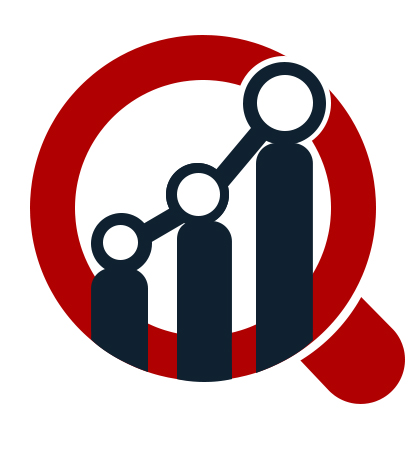The global AI in aviation market is expected to exhibit a strong CAGR of 46.83% over the forecast period from 2017 to 2023, according to the latest research report from Market Research Future (MRFR). The global AI in aviation market is expected to reach a valuation of more than USD 1 billion by 2023, rising from a valuation of USD 113.29 million in 2017.
Leading Players in Global AI in Aviation Market Includes:
Searidge Technologies, Cognitive Code, Innovative Binaries, IRIS Automation, Pilot AI Labs, Northrop Grumman Corporation, Lockheed Martin Corporation, Thales SA, Xilinx, Micron Technology, Samsung Electronics, Neurala Inc., NVIDIA Corporation, Microsoft Corporation, Amazon, General Electric, Boeing, Airbus SE, IBM Corporation, Garmin Ltd., and Intel Corporation.
Get Free Sample at:
https://www.marketresearchfuture.com/sample_request/6669
The report makes a detailed analysis of all factors affecting the global AI in aviation market over the forecast period. The leading players operating in the global AI in aviation market are also profiled in the report. The impact of the COVID-19 pandemic on the global AI in aviation market is also assessed in the report.
AI, or artificial intelligence, has several uses in the aviation industry. Rapid development of AI technology has led to widespread adoption of the technology in the aviation industry in recent years. Several areas of fleet and operations management have shown promise for the use of AI, due to the capability of AI to handle complicated, multifarious algorithms and calculations. Dynamic pricing is one of the most basis uses of AI in the aviation industry. Dynamic pricing comprises calculating the airfare based on various factors such as passenger characteristics, seat availability, and current market conditions. Dynamic pricing allows airliners to accrue maximum airfares with respect to the base fare. Flight delay prediction is another key use of AI in the aviation industry and is likely to become increasingly popular over the coming years. Flight route optimization is also a major application of AI in the aviation industry.
The growing aviation sector is also likely to be a major driver for the AI in aviation market. Due to falling air fares, commercial aviation has become popular with a widening range of consumers. Cheap air fares allow consumers from lower economic strata to use air travel, widening the horizons of the aviation industry.
Segmentation:
The global AI in aviation market is segmented on the basis of type, equipment, technology, application, and region.
By type, the global AI in aviation market is segmented into hardware, software, and services. The hardware segment is further sub-segmented into processors, memory, and networks. The software segment is further categorized as AI platforms and AI solutions. The services segment is further sub-segmented as integration and deployment, and support and maintenance.
By equipment, the global AI in aviation market is segmented into autocollimator, measuring microscope, profile projector, optical digitizers and scanners, coordinate measuring machine, and vision measuring machine.
By technology, the market is segmented into machine learning, natural language processing, context awareness computing, and computer vision. The machine learning segment is further sub-segmented into deep learning, supervised learning, unsupervised learning, semi-supervised learning, and reinforcement learning. The machine learning segment is likely to dominate the global AI in aviation market over the forecast period.
By application, the global AI in aviation market is segmented into surveillance, virtual assistance, flight operations, smart logistics, smart maintenance, training, dynamic pricing, manufacturing, and others. The manufacturing segment is further sub-segmented into material movement, inspection and predictive maintenance, production planning, quality control, and waste reclamation.
Regional Analysis:
North America dominates the global AI in aviation market due to the growing aviation sector in the region and the growing development of AI technologies in the region. North America is a development hotspot for AI technologies due to the presence of several leading players in the region. This is likely to remain a major driver for the AI in aviation market in North America over the forecast period.
Table of Content:
1 Executive Summary
2 Scope Of The Report
2.1 Market Definition
2.2 Scope Of The Study
2.2.1 Research Objectives
2.2.2 Assumptions & Limitations
2.3 Markets Structure
3 Market Research Methodology
3.1 Research Process
3.2 Secondary Research
3.3 Primary Research
3.4 Forecast Model
4 Market Landscape
4.1 Porter’s Five Forces Analysis
4.1.1 Threat Of New Entrants
4.1.2 Bargaining Power Of Buyers
4.1.3 Threat Of Substitutes
4.1.4 Rivalry
4.1.5 Bargaining Power Of Suppliers
4.2 Value Chain/Supply Chain Of Global AI In Aviation Services Market
Continued………..
Browse More Details on Report at:
https://www.marketresearchfuture.com/reports/ai-in-aviation-market-6669
About Market Research Future:
At Market Research Future (MRFR), we enable our customers to unravel the complexity of various industries through our Cooked Research Report (CRR), Half-Cooked Research Reports (HCRR), Raw Research Reports (3R), Continuous-Feed Research (CFR), and Market Research & Consulting Services.
MRFR team have supreme objective to provide the optimum quality market research and intelligence services to our clients.
Media Contact
Company Name: Market Research Future
Contact Person: Abhishek Sawant
Email: Send Email
Phone: +1 646 845 9312
Address:Market Research Future Office No. 528, Amanora Chambers Magarpatta Road, Hadapsar
City: Pune
State: Maharashtra
Country: India
Website: https://www.marketresearchfuture.com/reports/ai-in-aviation-market-6669

